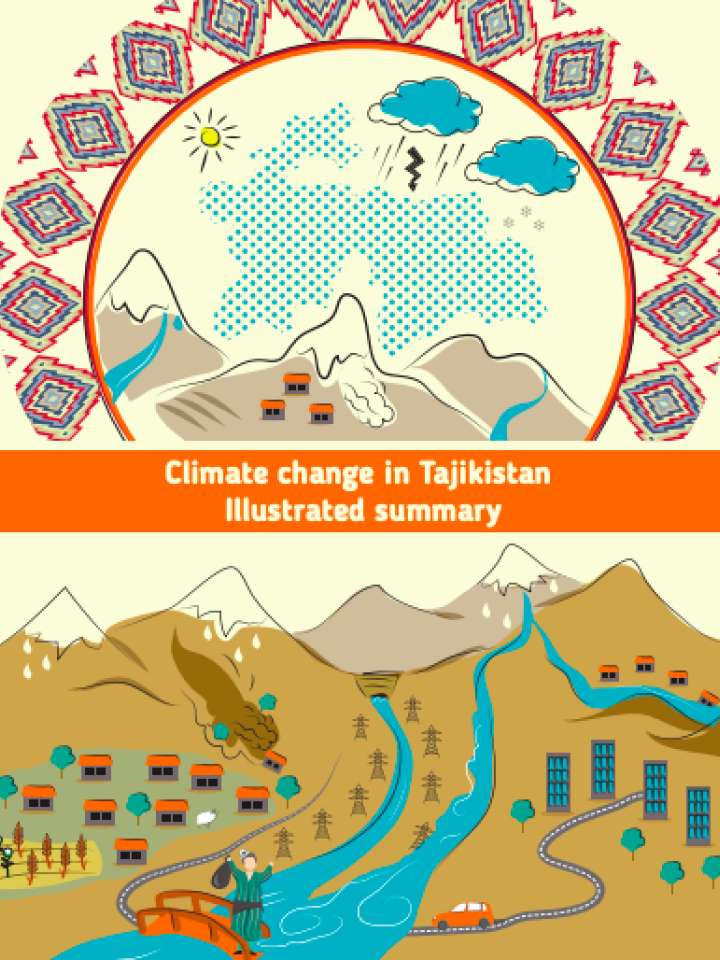Climate change in Tajikistan: Illustrated summary
This document illustrates climate trends and developments in Tajikistan on the basis of images.
Tajikistan is prone to natural disasters and ranks high on the international climate impact lists. Disruptions in rainfall, growing temperatures, reductions in glacial cover and extreme weather events are among ongoing and anticipated impacts of climate change in Tajikistan. The long-term weather trends show more hot days and fewer cold days with considerable variations in precipitation. Hydropower generation is highly sensitive to weather and water conditions, and the changing climate is creating new challenges for the planning and management of hydropower plants. Avalanches in winter, flash floods in spring, and high temperatures and dust storms in summer affect both the transport sector and people in their dwellings.
The country’s approach to climate actions is the full-scale integration of climate resilience into the planning and rehabilitation of major infrastructure and local adaptation measures. Adaptation measures in agriculture include the use of greenhouses to grow a variety of crops, planting frostand drought-resistant varieties of fruit trees to protect against extremes and providing shelter and shade for livestock to lessen the risk of heat stress.
Tajikistan’s reliance on hydropower has helped keep its total and per person greenhouse gas emissions the lowest in Central Asia, and one of the lowest in the world. While its economy and population grow, Tajikistan has committed to keep its emissions below 1990 levels. Completion of construction of the Rogun hydropower plant may double its clean energy production capacity. A key source of greenhouse gas emissions in Tajikistan remains agriculture, but the country’s emissions per unit of agricultural production are the lowest in Central Asia.
Explore further
